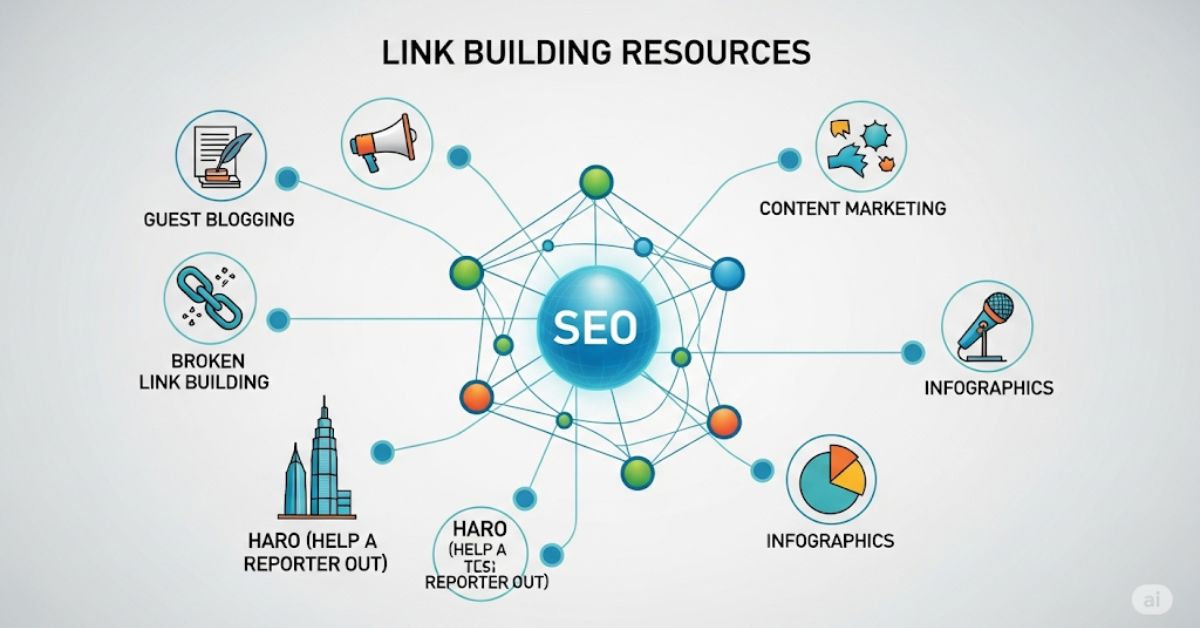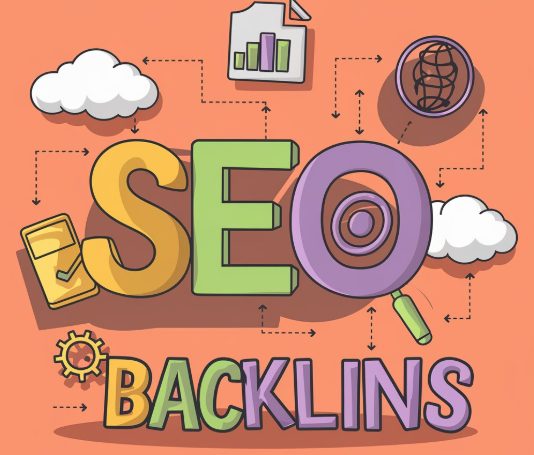In the world of digital marketing, link building remains one of the most powerful tools for improving a website’s visibility, authority, and ranking in search engine results. Despite changes in Google’s algorithm and the rise of AI-generated content, backlinks are still a major ranking factor. Search engines view backlinks as votes of confidence. The more quality backlinks your website has, the more trustworthy and relevant it appears.
However, link building isn’t just about dropping links anywhere on the internet. It’s a strategic, time-consuming, and often complex process that requires smart tools and resources. In this article, we’ll walk you through the best link building resources available in 2025. Whether you’re a beginner, an SEO agency, or a seasoned marketer, this guide will help you build a solid foundation and take your outreach to the next level.
Free vs. Paid Link Building Resources
Before diving into specific tools, it’s essential to understand the difference between free and paid link building resources. Each has its own advantages and limitations.
Free Resources
- Ideal for beginners or those with limited budgets.
- Useful for getting started with outreach and basic backlink analysis.
- Often come with usage limitations or restricted access to premium features.
Paid Resources
- Provide advanced features, in-depth data, and automation capabilities.
- Allow scalability for larger campaigns.
- Offer more accurate and real-time results.
Choosing the Right Option
Start with free tools to learn the basics. As your SEO needs grow or if you manage multiple websites or clients, investing in premium tools becomes essential. Many paid tools offer free trials, so test them before committing.
Outreach & Prospecting Tools
Outreach is the heart of link building. Finding the right prospects and crafting personalized emails is key to building relationships and earning backlinks. The following tools streamline the process:
Hunter.io
- Purpose: Find professional email addresses associated with any domain.
- Features: Email verification, domain search, and CRM integration.
- Why Use It: Saves hours of manual email finding and increases email deliverability.
- Best For: Cold outreach campaigns.
Snov.io
- Purpose: Lead generation and outreach automation.
- Features: Email finder, drip campaigns, verification tools.
- Why Use It: Automates your outreach with tracking and analytics.
- Best For: Agencies and advanced SEOs.
BuzzStream
- Purpose: Relationship-based outreach management.
- Features: Contact tracking, email templates, and campaign reports.
- Why Use It: Organizes your outreach efforts in one place.
- Best For: Outreach at scale.
NinjaOutreach
- Purpose: Influencer marketing and link building.
- Features: Find blogs, get contact details, send outreach emails.
- Why Use It: Massive database of influencers and websites.
- Best For: Bloggers, PR teams, and agencies.
FindThatLead
- Purpose: Discover and verify leads quickly.
- Features: Domain search, email sender, lead lists.
- Why Use It: Budget-friendly option for email prospecting.
- Best For: Startups and solopreneurs.
Outreach Tips:
- Personalize every message with the recipient’s name and content.
- Offer value (like a great article or relevant content).
- Follow up after 3–5 days politely.
Backlink Analysis Tools
Knowing where your competitors get their backlinks helps you find opportunities for your own site. These tools offer deep insights into link profiles.
Ahrefs
- Purpose: Industry-leading backlink checker and SEO suite.
- Features: Backlink reports, referring domains, anchor text analysis.
- Why Use It: Accurate data, excellent UI, link intersect tools.
- Best For: Serious SEOs and agencies.
SEMrush
- Purpose: SEO and SEM tool with robust backlink analysis.
- Features: Link audits, toxic score, backlink gap analysis.
- Why Use It: Combines organic research with link data.
- Best For: Competitor benchmarking.
Moz Link Explorer
- Purpose: Analyze domain authority and link profiles.
- Features: Spam score, top pages, inbound links.
- Why Use It: Simple to use, beginner-friendly.
- Best For: Small businesses.
Ubersuggest
- Purpose: SEO tool by Neil Patel, useful for backlink analysis.
- Features: Top backlinks, link growth over time.
- Why Use It: Affordable with clean interface.
- Best For: Freelancers and bloggers.
How to Use:
- Identify top pages of competitors.
- Use “Link Intersect” to find domains linking to competitors but not you.
- Reach out with your content that matches or improves on theirs.
Content-Based Link Building Resources
Quality content naturally attracts backlinks. These tools help you find trending topics and optimize your content to earn links.
BuzzSumo
- Purpose: Discover most shared and linked content.
- Features: Topic search, competitor analysis, alerts.
- Why Use It: Find high-performing content ideas.
- Best For: Creating viral, shareable content.
AnswerThePublic
- Purpose: Content ideation through real user questions.
- Features: Visual keyword map.
- Why Use It: Understand what people want to know.
- Best For: FAQ articles and blog topics.
Google Trends
- Purpose: Shows trending topics over time.
- Features: Regional interest, related queries.
- Why Use It: Publish timely content.
- Best For: Capitalizing on current events.
SurferSEO
- Purpose: Content optimization based on top-ranking pages.
- Features: Content editor, keyword suggestions.
- Why Use It: Create better-optimized pages that rank and get linked.
- Best For: SEOs and content teams.
Quora & Reddit
- Purpose: Community-driven platforms.
- Why Use Them: See real problems people face; answer them through content.
- Bonus: Build authority by linking back (sparingly) to your content.
Link Prospecting & Guest Post Platforms
Guest posting helps you earn high-quality links from niche-relevant sites. These platforms connect you with guest post opportunities.
HARO (Help a Reporter Out)
- Purpose: Connects sources with journalists.
- How It Works: Respond to journalist queries via email.
- Why Use It: Earn backlinks from major media sites (Forbes, Business Insider).
- Best For: Experts and professionals.
Terkel.io
- Purpose: Newer alternative to HARO.
- How It Works: Submit short answers to questions; get published.
- Why Use It: Easier process, growing database.
- Best For: Small businesses and thought leaders.
MyBlogGuest (if active)
- Purpose: Blogger outreach and guest post exchange.
- Why Use It: Pre-built guest post network.
GuestPostTracker
- Purpose: Paid directory of blogs that accept guest posts.
- Why Use It: Saves time by filtering sites by niche.
Tips:
- Pitch relevant and high-value topics.
- Provide writing samples.
- Follow editorial guidelines strictly.
Broken Link Building Tools
Broken link building involves finding dead links on websites and suggesting your content as a replacement. It’s a win-win for you and the website owner.
Check My Links (Chrome Extension)
- Purpose: Find broken links on any webpage.
- Features: Fast scanning and color-coded results.
Ahrefs Broken Link Checker
- Purpose: Identify broken outbound/inbound links.
- How It Helps: Find high-authority pages with broken links.
Screaming Frog SEO Spider
- Purpose: Crawl entire sites for broken pages.
- Why Use It: Best for large-scale audits.
How to Use:
- Scan sites for broken links.
- Create or repurpose similar content.
- Email site owners to suggest your content as a replacement.
Link Monitoring & Management Tools
Backlink monitoring is important for understanding the health of your SEO strategy. These tools help you track new links, lost links, and toxic links.
Linkody
- Purpose: Track backlinks with real-time alerts.
- Features: Link type, anchor text, status.
- Why Use It: Affordable and easy to use.
Monitor Backlinks
- Purpose: Monitor your backlinks over time.
- Features: Integration with Google Analytics, keyword rankings.
SEO PowerSuite
- Purpose: Desktop-based SEO tool.
- Why Use It: One-time payment model, good for agencies.
Why It Matters:
- Identify and fix broken or lost backlinks.
- Disavow harmful links.
- Report progress to clients.
Educational Resources for Link Building
Staying updated with industry trends helps you stay ahead. These blogs and communities offer expert insights.
Backlinko (by Brian Dean)
- Focus: Actionable link building and SEO techniques.
- Why Read: High-quality guides, real-world results.
Ahrefs Blog & YouTube
- Focus: SEO tutorials, experiments, and case studies.
- Why Read/Watch: Clear, data-backed content.
Authority Hacker
- Focus: Authority site building, outreach, affiliate SEO.
- Best For: Intermediate to advanced marketers.
SEO Blueprint
- Creator: Glen Allsopp.
- Why Buy: Comprehensive course on building systems.
SEO Communities
- Reddit r/SEO: Ask questions, get feedback.
- Facebook Groups: Network and learn from others.
- Slack Channels: Instant feedback and expert advice.
Conclusion
In 2025, link building remains a vital strategy for improving your website’s visibility, traffic, and authority. Whether you’re a beginner or an experienced SEO professional, using the right tools can make a significant difference in your results. From outreach and prospecting platforms to backlink monitoring and educational resources, each tool plays a key role in building a strong link profile. Focus on quality over quantity, build genuine relationships, and create valuable content that others want to reference. Always track your progress, adapt your strategies, and keep learning through trusted SEO communities. With consistent effort and the right link building resources, your site can gain higher search rankings and long-term success. Link building is not just a tactic, it’s a sustainable growth strategy when done right.



